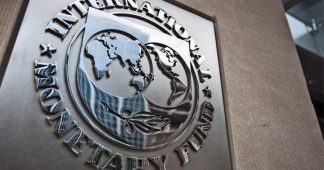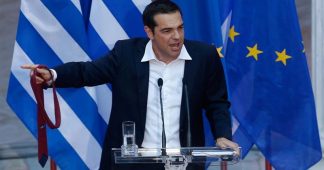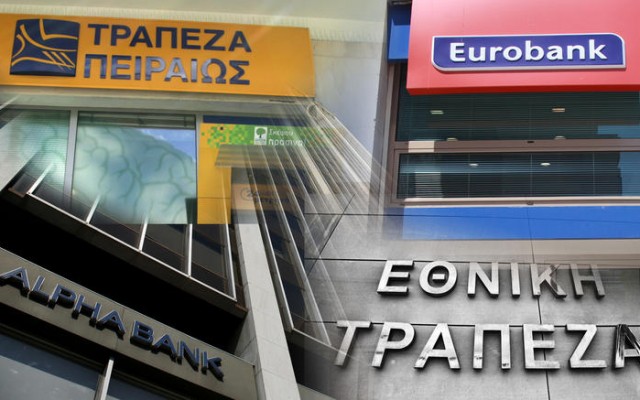Eurozone finance ministers agree on last-minute debt reprofiling for Greece
By Bodo Ellmers
27 June, 2018
Eurozone finance ministers convened for a crucial Eurogroup session in Brussels on 21 June and agreed on a last-minute set of new debt reprofiling measures for Greece. The package of maturity extensions, interest deferrals and €15bn in new loans from the European Stability Mechanism (ESM) means that the Greek debt stock is likely to rise further in coming years.
While Eurogroup members agreed to return profits they make on Greek bond purchases to Greece, this will happen in tranches until 2022 and comes with policy conditionalities attached. Experts doubt that the package can restore debt sustainability to Greece in the long term, and the International Monetary Fund (IMF) decided to extract itself. The case proves that an independent debt workout mechanism is urgently needed for the speedy and sustainable solution of debt crises in Europe.
Last-minute action by the Eurogroup
The third bailout programme for Greece’s creditors expires in August. From this point on, Greece was supposed to ‘return to markets’. Before this can happen, however, private investors need to be convinced that Greece’s current debt burden is sustainable, i.e. that Greece is no longer a bankrupt state. Otherwise they won’t lend money at affordable rates. Since both the IMF and the European Commission found that the debt burden was not sustainable, a solution had to be found to avoid a fourth bailout programme. The Eurogroup has waited until the last minute to take a set of measures that might restore creditor confidence for a number of years, but these measures are unlikely to solve the Greek debt crises for good.
Kicking the can down the road one more time
The main elements of the June package are elements that do not reduce Greece’s debt burden, but simply address its financing needs in the short and mid-term. It is a continuation of the ‘kicking the can down the road’ approach that the Eurogroup has applied since 2010. This is when the first bailout loans were provided bilaterally by European Monetary Union (EMU) Member States. This saved Greece’s then private creditors from writing off their unsustainable debts and turned a private bank problem into a financial and political problem for EU Member States that use the Euro. It also postponed the challenge of finding sustainable solutions to the debt crisis.
The main elements of the package include extending the maturity on the European Financial Stability Facility (EFSF) loans for another 10 years, and deferring interest and amortisation for the same period. This deferred interest is, of course, added to the debt stock, so these are measures that will increase rather than reduce the Greek debt stock over the long term.
A second element is disbursing €15bn in loans from the European Stability Mechanism (ESM), a new tranche of the third bailout package agreed in 2015. A share of €5.5bn is earmarked to pay down old debts. The remaining share of €9.5bn will be added to the Greek debt stock. These funds are supposed to serve as a cash buffer that could cover Greece’s financing needs for the next 22 months. This cash buffer provision suggests that even the Eurogroup is not fully convinced that the ‘return to markets’ will run smoothly in August.
The third element is the only one that provides some non-debt creating cash for Greece. Other EMU nations have finally committed to returning the profits they made on Greek bond purchases to Greece. The fact that other European nations profited financially from the crisis in Greece sparked some debate ahead of the Eurogroup meeting. Germany had to disclose that it made €2.9bn in profits, following a request by the Green opposition party in the German Bundestag. More than 80,000 Europeans have signed a petition by WeMove.EU that demanded EU countries should return these profits to Greece, in order to mitigate the suffering of the Greek people.
The Eurogroup’s decision is that Greece’s creditors can keep most of those profits. Only those profits made from budget year 2017 and in future will be transferred. And these will not be transferred to Greece but to the ESM-segregated account. This will be done in tranches until 2022, with severe conditionality attached.
The strings attached – a Fourth Memorandum?
When the Syriza party won the Greek elections back in 2015, one of the new government’s key priorities was to solve the country’s debt crisis by negotiating a Greek debt reduction with creditors. This strategy has obviously failed. This was also because attempts to build a coalition with other heavily indebted countries in the EU – and to solve the Euro crises through a European Debt Conference – were unsuccessful. The fall-back strategy was to restore Greek sustainability and avoid a fourth programme and memorandum at any cost, as well as avoiding further sacrifices – of which there were many in the past three years of austerity measures. This strategy was not fully successful either.
The Eurogroup package includes an Annex on “Specific commitments to ensure the continuity and completion of reforms adopted under the ESM programme”. This is a comprehensive set of economic policy conditionalities in highly sensitive sectors: fiscal surpluses, tax conditionality, pension system, labour regulations and wages, and privatisations.
Above all, Greece had to commit itself to a primary budget surplus of 3.5%, from now until 2022, the highest in the EU. This figure puzzled experts around the world. The IMF, which has seen a few debt crises before, had judged in its 2016 debt sustainability analysis (DSA): “Even if Greece through a heroic effort could temporarily reach a surplus close to 3½ percent of GDP, few countries have managed to reach and sustain such high levels over several decades”. IMF staff suggested that “the DSA should be based on a primary surplus over the long-run of no more than 1½ percent of GDP”. The Eurogroup now suggests that the surplus will be around 2.2% from 2022 onwards. A high primary surplus equals austerity. This will make it difficult for the Greek government to boost growth, and create jobs and decent living conditions for its population.
The primary surplus is also a decisive factor to determine how much debt reduction Greece needs to reach sustainable levels. Disagreements between the IMF and EU institutions on the amount of debt relief needed were a key reason why the IMF could not disburse money under the third bailout programme. These disagreements continue.
IMF remains unconvinced
Statements made by IMF Managing Director Christine Lagarde at the 1am press conference on 22 June and the press release issued later that day make it clear that the IMF remains unconvinced that the Eurogroup package has provided a sustainable solution to the debt crisis. The IMF refuses to disburse any new loans, but will remain engaged in monitoring exercises. This is an attempt to close one of the most embarrassing chapters of IMF history whose major milestones since 2010 include: the violation of the IMF rule of never lending to an insolvent state without requiring an upfront debt restructuring (legalised ad hoc through the ‘systemic exemption clause’); the misjudgement of ‘fiscal multipliers’, which led to an ill-designed adjustment programme through which Greece lost 25% of their GDP in one of the worst recessions the world has ever seen; and the failure of three programmes with IMF participation of some sort to restore debt sustainability in Greece. After all, it was good business for the IMF. Greece has paid out almost €5bn in interest and charges to the IMF since 2010.
Implications for the international financial architecture
The Eurogroup meeting of 21 June proves why we need a fair and effective multilateral mechanism for restructuring sovereign debts when they become unsustainable. When the Greek debt crisis broke out in 2010, the creditors were private investors, and the unsustainable debt stock should have been restructured immediately in a speedy and orderly insolvency procedure. The original sin that caused all the trouble down the road was the decision to bail out private creditors with official loans, 95% of these loans were used to repay old debts or to recapitalize private banks. The bailout loans were provided in the beginning by EU Member States that use the Euro and later by the newly founded bailout institutions, EFSF and ESM. This turned an investor problem into a political problem that created a lot of bad vibes in the EU, to say the least.
The decade-long procrastination of the Eurogroup to come to a decision that solves the Greek debt crisis proves that such decisions need to be taken by an independent body, in a similar way to insolvencies in the private sector that are usually dealt with by insolvency courts. Last year the politicians that make up the Eurogroup were not able to make a decision because there were national elections in Germany and France. This time it was ostensibly upcoming elections in a single German province that stopped them. A sovereign’s insolvency is an unfortunate but not uncommon financial fact, and don’t get solved if politicians prioritise electoral politicking over timely action. This is only made more difficult when decision-making is dependent on a body of 19 politicians each with their own election cycles.
The greatest favour the EU could grant to finance ministers of the Eurozone Member States is to take the political burden of decision-making over unavoidable sovereign debt restructurings off their shoulders altogether. Life would be so much easier for them if they could point at a binding judgement of an independent insolvency court or arbitration panel when they meet their home country constituencies. We could even avoid bailouts paid with public monies in the first place, as we should have done in the case of Greece back in 2010. As the reform process of the EMU architecture is ongoing, we have an excellent opportunity to set up such a sovereign debt workout mechanism. Team Juncker, over to you…
Published at http://www.cadtm.org/Eurozone-finance-ministers-agree-on-last-minute-debt-reprofiling-for-Greece











